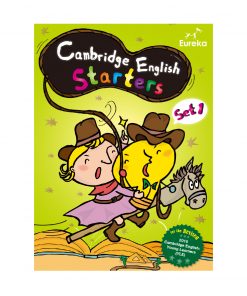Phonics Games for Kindergarten
Beanbag Toss
Contributed by: Veronica
How to play: (very similar to Jump On It)
1. Put flashcards on the floor (1-3 for PN/K1 ; 2-5 for K2/K3).
2. Students may line up (a few at a time) and hand them a beanbag.
3. Say a vocab word and they must throw the beanbag onto the correct picture.
4. Have them say the word as well to practise speaking.
* Make it a competition by having them line up 2×2 or 3×3! Fastest one gets a point.
COVID adaptation: Replace beanbags with balled up paper? (use only 1 per child- note: quite wasteful so suggest to use recycled paper if possible)
Differentiation:
+ Strong students can be “teacher”
– Point and read out loud the cards before calling out the word you want them to throw at
ALTERNATE FOR PHONICS: let weaker students try first, just throwing it at the sound you say. Then make the game harder by calling out words and they need to throw the beanbag at the letter it starts with (ie.. “Butterfly” they would need to throw at “B”) and invite stronger students for this round
Materials: Flashcards / beanbags (or soft balls)
Language skill: Listening, speaking (optional)
Theme: Any
Especially good for: Controlled high energy
Bus Stop
Contributed by: Veronica
How to play:
1. Have 4 students hold up the flashcards as “bus stops”
OR use sticky tack to stick them on the wall, spaced out
2. Choose 2-3 other students to play at a time.
3. The teacher calls out one of the flash card words, and they need to rush to line up in front of it.
SAFTEY NOTE: If you know some of your kids are more aggressive or rough, be careful who you pair together/maybe invite them up alone to try if there is too high of a risk that they will be over-excited and run into someone
Differentiation:
+ Choose strong students to be the ‘teacher’ calling out the words
– Ensure weak students play at the same time as a stronger student so that they can follow along
Materials: Flashcards & blue tack
Language skill: Listening / speaking (stronger students)
Theme: Any
Especially good for: Controlled high energy
Cross the River
Contributed by: Veronica
How to play: Very famous game. look online for variations on how to play.
1. Lay a row of flashcards on the ground. Add some pictures of sharks/alligators on the sides to make it more intense (careful: I have had a 3 year old cry because he was too scared to cross).
2. Students must step on the flashcards and say the words to cross from one side to the other.
3. If students are confident enough, you can tease them by pretending the sharks are coming.
TIP : this game doesn’t have to be isolated words! Can be great for extended speaking practice.
For example, self introductions. first card: “My name is ____” Second card: “I am ___ years old” etc.
By the end they’ve practiced saying 4- 5 sentences.
Differentiation:
+ Encourage them to go faster, add extra cards for their turn, or hide the written form of the word on the flashcard.
– Help them to remember, don’t tease about the sharks coming. Turn to the class to help for words they’ve forgotten, “Can we help Julia? What is this one?” then allow the individual to repeat after the class has said it and move on.
Materials: Flashcards / images of sharks (optional)
Language skill: Speaking
Theme: Any
Especially good for: Fixing individual pronunciation problems
extended speaking
Drill Orchestra
Contributed by: Veronica
How to play:
1. Students repeat the word over and over again.
2. When you bring the flashcard low or higher they must change how they say it.
Can choose any one of these or your own, just demonstrate for them! You can switch it up as you go, if they’re getting too noisy for example, switch it to emotions.
| Low | High | |
| Quiet | Loud | |
| Sad | Happy | |
| Low voice | High Voice |
Materials: Flashcards
Differentiation:
Choral speaking/group drilling so no differentiation
*BUT if you hear students mispronouncing something, stop and correct any mistakes or they will be drilling their mistakes!
Language skill: Speaking
Theme: Any
Especially good for: Getting the class to focus their energy/get back on task if they’re distracted
Feed the Puppet
Contributed by: Veronica
How to play:
1. Choose a puppet that you will introduce as being very very hungry.
2. Distribute small letter or vocab cards to each student. (for a faster game, give out multiple pieces that are the same)
3. Puppet says “I am soooo hungry for….. NAME A CARD STUDENTS HAVE”
4. Students must come up and “feed” the card to the puppet.
5. Very fun if they actually have to stick it in it’s mouth, and oops! Sometimes the puppet closes it’s mouth too early, onto your finger!
COVID adaptation: Students can come up to choose (by pointing) which one the teacher should feed the puppet
Differentiation:
+ Give the more challenging cards to more capable students. call out their cards towards the beginning.
– Give weaker students the same card as many students so they have a hint when to go up. OR call out their cards near the end (so they might be the only one left holding something when you call theirs out).
Materials: Flashcards (enough pieces / letter cards for each student in the class) / puppet
Language skill: Listening
Theme: Any
Especially good for: Revision of a large amount of phonics sounds & vocabularies
Hide It!
Contributed by: Veronica
How to play:
*Good for PN/K1 especially. K2/K3 might like it less, depending on their level.
1. “Secretly” (ie. very obviously with kids watching) hide 4 flashcards around the room.
2. Invite 4 students to come up and each of them need to go and find one word and bring it back to you.
3. When they bring it to you, they must say the word they found.
SAFETY NOTE: As you hide the cards make sure the path to them is clear so that the kids can easily access it without tripping on something.
COVID adaptation: Instead of students bringing them back, ask them to go and stand where it is hidden
Differentiation:
+ Make the kids close their eyes (although this might take long to find)
– Ask students in the class to help them find the word by pointing
Materials: Flashcards
Language skill: Reading, speaking
Theme: Any
Especially good for: Checking that students know the words and aren’t just relying on their classmates / Controlled high energy
Jump On It!
Contributed by: Veronica
How to play: (very similar to Beanbag Toss)
1. Put flashcards on the floor (1-3 for PN/K1 ; 2-5 for K2/K3).
2. Students may line up (a few at a time).
3. Say a vocab word and they must jump onto the correct picture.
4. Have them say the word as well to practise speaking.
SAFETY NOTE: Do not let more than one kid jump at once. For little wee ones (PN, K1), might want to hold their hand to steady them while they jump.
Differentiation:
+ Strong students can be “teacher”
– Point and read out loud the cards before calling out the word you want them to jump onto
ALTERNATE FOR PHONICS: Let weaker students try first, just jumping on the sound you say. Then make the game harder by calling out words and they need to jump on the letter it starts with (ie.. “Butterfly” they would need to jump on “B”) and invite stronger students for this round.
Materials: Flashcards
Language skill: Listening, speaking
Theme: Any
Especially good for: Controlled high energy
Little Teacher
Contributed by: Veronica
How to play:
1. Invite a student up to be the “teacher”. (Have the class say “hello Mr/Ms ____” to make it silly)
2. This student gets to point at whatever flashcard on the board, and then the class needs to say aloud what it is
Differentiation: Choral activity, just pay attention to mistakes
Materials: Flashcards
Language skill: Reading, speaking
Theme: Any
Especially good for: Reducing teacher talking time
Magic Bag
Contributed by: Veronica
How to play:
1. Place vocab words in a bag, even better: have objects when possible.
2. Students reach in and pull one out, then say the word/letter sound on the card.
3. Make a big deal out of how fun it is to pull something from the bag.
TIP: If you are using objects, you can fix the game so that you can force certain kids to practice certain words. For example, you know Sarah always struggles to pronounce the word Strawberry. When it is her turn, feel through the bag to push the strawberry up, cinching the bag below it so it’s the only one she can grab.
COVID adaptation: Only teacher pulls out of the bag but still with the element of surprise. Can ask sections of the class to call out what the item is.
Differentiation:
+ No peaking!!
– Students can pull out the word in pairs
Alternatively invite stronger students up first a few times so that their repeating what the item is will help weaker students remember before it’s their turn.
Materials: Flashcards or objects / bag
Language skill: Speaking
Theme: Any
Especially good for: Individual speaking practise
Stand Up Sit Down
Contributed by: Veronica
How to play:
1. Set 4 chairs in a row facing the class.
2. Invite 4 students to sit in the chairs, and give them each a vocab word to hold onto (they should look at the card, but then hold it facing out so the class can see)
3. Teacher calls out a word. When the student holding that card hears it, they must stand up, repeat it, sit down.
4. After each word has been called a few times, change players.
TIP: Start slow then speed up!
Differentiation:
+ Strong students can be “teacher”
– Weak students can be supported by the class (students will usually start to point at the right kid if they did not stand up on their own)
Materials: Flashcards (can switch up the 4 words being used when it gets too easy)
Language skill: Listening, speaking
Theme: Any
Especially good for: Really repetitive drilling without the kids realizing / Controlled high energy
Stand Up Sit Down (Whole Class)
Contributed by: Lla
How to play:
1. Introduce two actions for different words or word categories. Teacher calls out words and students need to do the correct action.
Example:
If you hear ‘b’ sound — stand up
If you hear ‘c’ sound — put your hands on your head.
Note: using an action such as clapping is difficult as you cannot easily see how many students have gotten it right or wrong. with something visual such as hands on head or stand up, while some weaker students may copy the stronger students, you can still gauge how well they understand the difference in sounds.
Differentiation:
+ Strong students can be “teacher” calling out the words.
– Weak students may follow others
Materials: n/a
Language skill: Listening
Theme: Any, phonics
Especially good for: Accessing class’ overall comprehension
What is Number 3?
Contributed by: Veronica
How to play:
1. Stick multiple flashcards to the whiteboard and add numbers underneath them.
2. Call out “What is number….” then say the number. Students must reply by saying which card that is.
Differentiation: Choral activity, just pay attention to mistakes
Materials: Flashcards / blue tack / whiteboard / chalkboard
Language skill: Reading, speaking
Theme: Any, while reinforces numbers
Especially good for: Higher ability classes
What’s Missing?
Contributed by: Veronica
How to play:
1. Stick flashcards on the board. 2-3 for PN/K1 3-6 for K2/K3
2. Tell students to look at the back of the room (or close their eyes but then they cheat)
3. Remove one of the cards and hide it.
4. Ask them to look again and tell you what’s missing.
5. Invite students up to be the ones to choose which flashcard to remove.
Differentiation: n/a
Materials: Flashcards / blue tack
Language skill: Reading
Theme: Any
Especially good for: Higher order thinking
Slap It!
Contributed by: Veronica
How to play:
1. Stick flashcards on the board.
2. Give 2 students a swatter (popsicle stick, their hand, fly swatter)
3. Call out a word and they have to hit it on the board.
Differentiation:
+ Strong students can call out the words
– Weaker students can be paired together so that they don’t just rely on the strong students. then you can go a bit slower/repeat one target word more times that you want them to focus on
Materials: Flashcards / blue tack
Language skill: Reading, listening
Theme: Any
Especially good for: Repetitive drilling in a fun way
Drive – Through Blending
Contributed by: Neelam
How to play:
1. Write sounds in a fun path on the board.
2. Use a toy car and park at each sound. Students should say the sound.
*note, this is using synthetic phonics so the sound should be accurate to it’s pronunciation in the word (i.e saying ‘l’ not ‘ell’ or “lah lah lah”)
3. Drive the car faster to blend the word together.
REFERENCE: https://www.youtube. com/watch?v=-nkwUtPc_lQ
Differentiation: Choral activity, just pay attention to mistakes
Materials: Whiteboard or chalk board / toy car
Language skill: Reading
Theme: Blending phonics
Especially good for: Synthetic phonics (jolly phonics)
Magic Pencil
Contributed by: Neelam
How to play:
1. Students use their “magic pencil” (their fingers) to trace the letter shape in the air.
Note: Teachers must write in the reverse so that students may copy the right way.
Differentiation:
+ Invite a strong student up to write it on the board while others are air writing
Materials: n/a
Language skill: Writing
Theme: Any
Especially good for: Phonics
Cup Blending
Contributed by: Theo
How to play:
1. Write the initial sound on one cup, and the final sound on another cup. (for example m, s, f, on cups 1, ‘at’ ‘ad’ on cups 2).
2. Start with the cups far away from each other. As the teacher brings them closer together the students read the word faster.
3. May allow students to choose and play around with which cups they would like to match.
COVID adaptation: Just with pointing to the cups and teacher moves
Differentiation:
+ Mini teacher gets to move the cups closer together.
– Use only 1 set of cups (i.e. one initial sound and one final sound until students are familiar with blending)
Materials: Cups, marker to write letters on the cups
Language skill: Reading, speaking
Theme: Any
Especially good for: Phonics
Charades
Contributed by: Katie
How to play:
1. Recap vocabulary flashcards with actions e.g. animals, weather etc.
2. One student stands or sits in the hotseat – facing the rest of the class. Show this student a flashcard – remind them shhh they must not say the word!
3. The student in the hotseat acts out the word (e.g. fanning their face for ‘sunny’ or ‘hot’) and the other students guess the word.
4. Whoever guesses correctly comes up to the hotseat.
Differentiation: n/a
Materials: Flashcards
Language skill: Speaking
Theme: Any
Especially good for: Revision, comprehension
Pairs
Contributed by: Katie
How to play:
1. Recap vocabulary flashcards then place 2 sets of flashcards facedown on a whiteboard.
2. Invite students one by one to come up and turn over 2 flashcards. They must say the word.
3. Ask the class ‘are these the same?’. If the pair does not match turn them over. If the pair match leave them face up and continue the game.
4. Continue until all pairs are found.
COVID adaptation: Students point to the one they want to turn — or add numbers to the backs of cards so they can say the numbers they want to turn.
Differentiation: If student can not say the word, ask them what the first letter is. Teacher can then say the word for them to copy.
Materials: 2 sets of flashcards ; For K1-K2 4-6 words work well
Language skill: Speaking
Theme: Any
Especially good for: Revision, speaking






